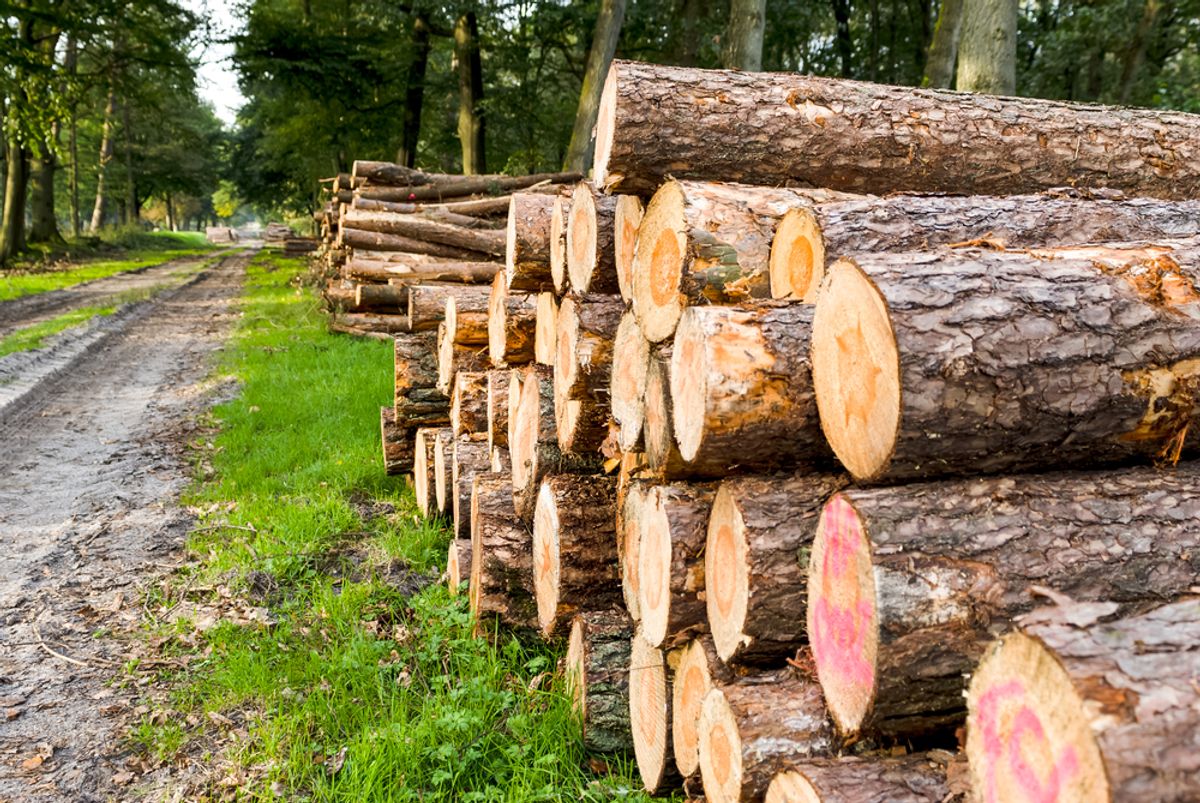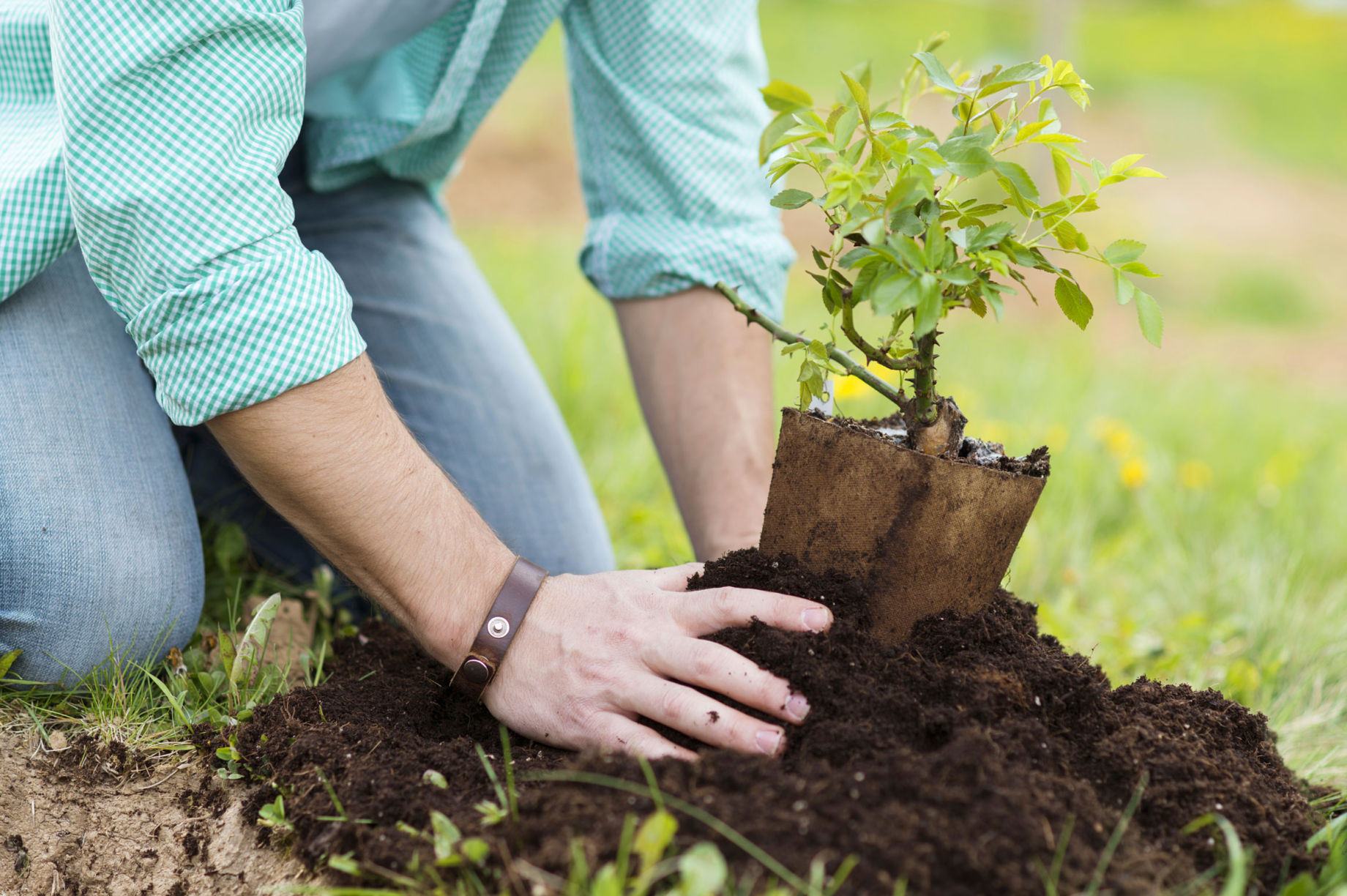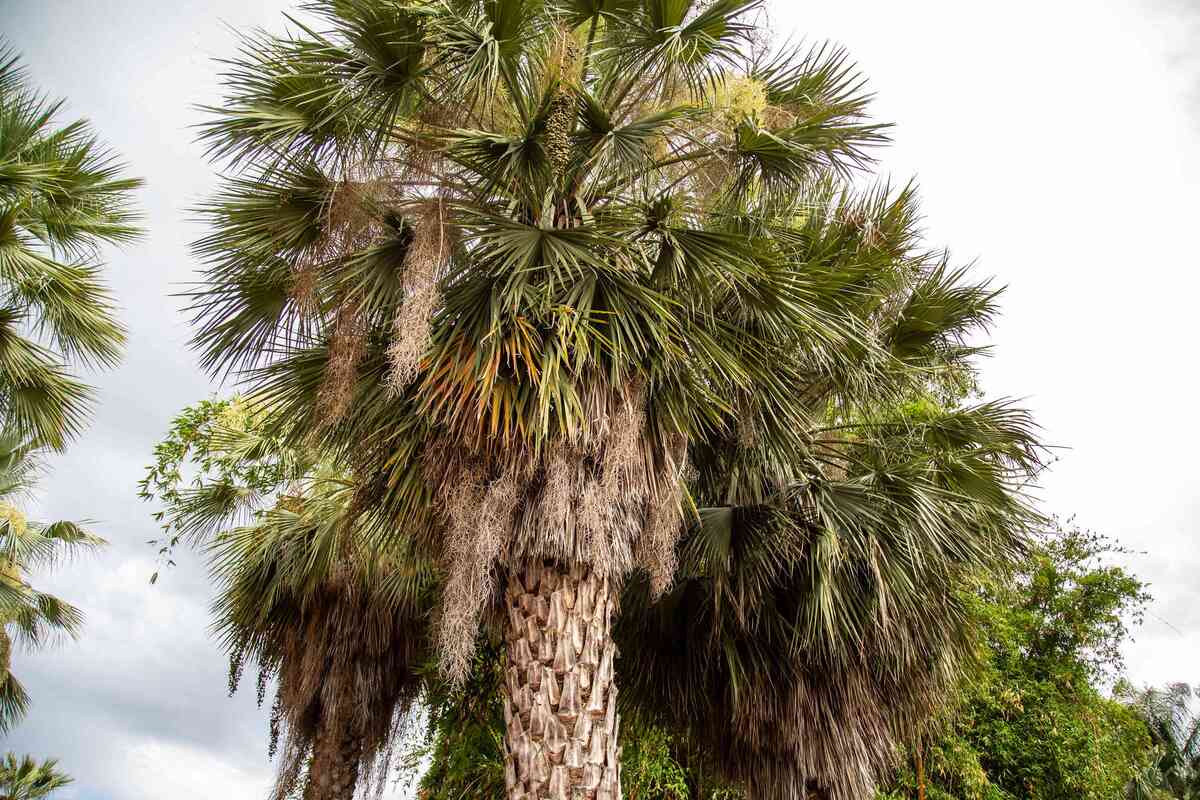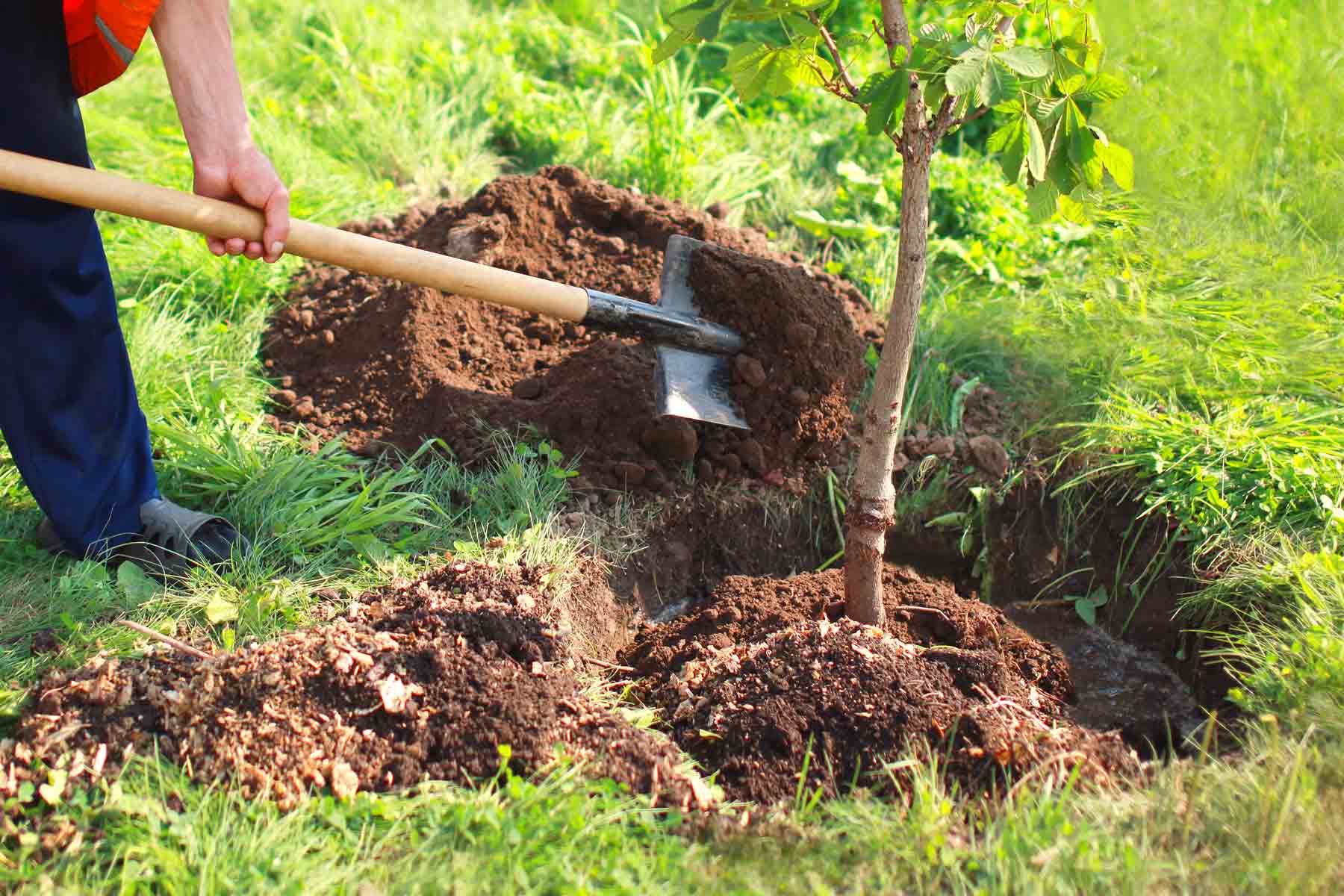Home>Gardening Tips and Tricks>Eco-Friendly Gardening>How Does Trees Make Paper


Eco-Friendly Gardening
How Does Trees Make Paper
Modified: January 22, 2024
Learn how trees contribute to the eco-friendly gardening practice of making paper and discover the benefits of sustainable paper production.
(Many of the links in this article redirect to a specific reviewed product. Your purchase of these products through affiliate links helps to generate commission for Chicagolandgardening.com, at no extra cost. Learn more)
Table of Contents
Introduction
Welcome to the world of eco-friendly gardening! In this article, we will delve into the fascinating concept of creating a sustainable and environmentally-friendly garden. By adopting eco-friendly gardening practices, we can minimize our impact on the planet while still enjoying the beauty and benefits of a flourishing garden.
Eco-friendly gardening refers to the use of sustainable practices that help conserve resources, protect biodiversity, and reduce pollution. It involves making conscious choices about the materials we use, the way we manage our gardens, and how we interact with the natural environment.
In recent years, there has been a growing interest in eco-friendly gardening as people become more aware of the need to live in harmony with nature. The traditional approaches to gardening, such as excessive use of chemical fertilizers and pesticides, can have harmful effects on the environment as well as human health. By contrast, eco-friendly gardening focuses on natural and organic methods that work in harmony with the ecosystem.
One of the key principles of eco-friendly gardening is the reduction of waste and the promotion of sustainability. This can be achieved through practices such as composting, water conservation, and the use of renewable resources. By minimizing our carbon footprint and embracing sustainable gardening techniques, we can create a healthy and thriving garden space that benefits both ourselves and the planet.
Throughout this article, we will explore various eco-friendly gardening practices and techniques that you can implement in your own garden. From choosing the right plants to soil management strategies and responsible pest control, we will provide you with a comprehensive guide to creating an eco-friendly garden that is both beautiful and sustainable.
Deforestation and the Paper Industry
The paper industry is one of the major contributors to deforestation worldwide. Trees are cut down to produce pulp, the main raw material used in the manufacturing of paper. This rampant deforestation poses a significant threat to the environment, leading to habitat destruction, loss of biodiversity, and increased greenhouse gas emissions.
According to the World Wildlife Fund (WWF), around 40% of global industrial logging is directly used for paper production. This staggering number highlights the scale of the problem and the urgent need to address unsustainable practices in the paper industry.
The demand for paper continues to rise as more and more sectors rely on it for various purposes, including packaging, printing, and writing. As a result, forests, which play a crucial role in absorbing carbon dioxide and maintaining the delicate balance of the ecosystem, are being decimated at an alarming rate.
It is important to note that not all paper production is equal in terms of environmental impact. The methods and sources of pulp used greatly influence the sustainability of the paper industry. Recycled paper is a more environmentally friendly alternative as it reduces the demand for virgin pulp and minimizes the pressure on forests. However, the majority of paper still comes from new tree fiber.
Furthermore, the paper industry is also responsible for the release of pollutants into waterways. Chemicals used in the paper manufacturing process, such as chlorine and bleach, can contaminate rivers and streams, harming aquatic life and ecosystems.
Given the significant environmental impact of the paper industry, it is imperative for us to seek sustainable alternatives and reduce our reliance on tree-based paper. In the following sections, we will explore the process of making paper from trees, the types of trees used, and the devastating environmental consequences of paper production. Additionally, we will discuss eco-friendly alternatives that can help mitigate the negative effects of the paper industry and promote a more sustainable future.
The Process of Making Paper from Trees
The process of making paper from trees involves several stages, each contributing to the transformation of raw materials into usable paper products. While the specific methods may vary depending on the type of paper being produced, the general process is as follows:
- Logging: The first step in paper production is logging, where trees are harvested from forests. This often involves clear-cutting, which involves cutting down entire areas of forest, resulting in widespread deforestation and habitat destruction.
- Debarking and Chipping: Once the trees are harvested, the next step is to remove the bark and chip the logs into small pieces. Debarking helps to remove impurities and facilitates the processing of the wood fibers.
- Chemical Extraction: The chipped wood is then subjected to a chemical extraction process. This involves cooking the wood chips in a mixture of chemicals, such as sodium hydroxide and sodium sulfide, to break down the lignin and separate the cellulose fibers.
- Pulping: After the chemical extraction, the resulting mixture is mechanically pulped to separate the cellulose fibers from other components, such as lignin and hemicellulose. This process typically involves grinding the wood chips and subjecting them to high-pressure refining.
- Bleaching: The pulp is then bleached to remove any remaining impurities and achieve the desired brightness and color. Chlorine-based bleaching agents were commonly used in the past, but due to their negative environmental impact, alternative chlorine-free bleaching processes, such as elemental chlorine-free (ECF) or totally chlorine-free (TCF) methods, are now preferred.
- Paper Formation: The bleached pulp is diluted with water and passed through a series of screens to remove any remaining contaminants. The resulting pulp mixture is then spread onto a wire mesh screen to form a wet sheet of paper.
- Drying and Finishing: The wet paper is then pressed and dried to remove excess moisture. It is then further processed and treated, depending on the desired characteristics of the final product. This may involve additional coating, calendering, and cutting into specific sizes.
It is important to recognize that the process described above is highly simplified, and there may be variations and additional steps involved depending on the specific type and quality of paper being produced.
As we can see, the process of making paper from trees requires a significant amount of energy, water, and chemicals, all of which contribute to the overall environmental impact. The high demand for paper products, especially from non-recycled sources, contributes to deforestation and the depletion of natural resources. This highlights the need for more sustainable alternatives to tree-based paper, which we will discuss in the following sections.
Types of Trees Used for Paper Production
Various tree species are used in the paper production process, with some being more commonly utilized due to their desirable characteristics for papermaking. The selection of trees depends on factors such as their growth rate, fiber length, and pulp quality. Some of the most commonly used trees include:
- Spruce: Spruce trees, particularly the Norway spruce (Picea abies) and Sitka spruce (Picea sitchensis), are popular choices for paper production. They have long, slender fibers that contribute to the strength and durability of paper.
- Pine: Pine trees, such as the Scots pine (Pinus sylvestris) and the slash pine (Pinus elliottii), are commonly used in the paper industry. They produce pulp with good strength and brightness, making them suitable for a variety of paper grades.
- Eucalyptus: Eucalyptus trees, particularly the blue gum (Eucalyptus globulus), are widely utilized due to their fast growth and high pulp yield. Eucalyptus pulp is known for its strength, versatility, and excellent printing properties.
- Birch: Birch trees, such as the silver birch (Betula pendula) and the paper birch (Betula papyrifera), are valued for their short fibers, which contribute to the smoothness and opacity of paper. They are commonly used in the production of fine papers and specialty products.
- Poplar: Poplar trees, such as the hybrid poplar (Populus spp.), are favored for their fast growth and high cellulose content. They are often used in the production of recycled paper and lower-grade paper products.
It is worth mentioning that while these tree species are commonly used in the paper industry, other non-tree plant fibers, such as hemp and bamboo, are gaining recognition for their potential in sustainable papermaking. These alternatives offer benefits such as rapid growth, higher yields, and reduced reliance on tree resources.
It is crucial to ensure responsible and sustainable sourcing of trees for paper production. Certification programs such as the Forest Stewardship Council (FSC) and the Programme for the Endorsement of Forest Certification (PEFC) help identify paper products that come from well-managed and sustainable forests.
However, it is important to note that no matter the type of tree used, the environmental impact of paper production remains significant. This underscores the need to reduce paper consumption and explore alternative materials to mitigate the negative effects on forests and the planet.
Environmental Impact of Paper Production
The production of paper from trees has a profound impact on the environment, contributing to deforestation, habitat destruction, and climate change. Recognizing and understanding these impacts is crucial to drive the shift towards more sustainable practices in the paper industry. Here are some key environmental consequences of paper production:
- Deforestation: The paper industry is a major driver of deforestation, with vast areas of forests being cleared to meet the demand for wood pulp. Deforestation not only destroys crucial habitats for countless plant and animal species but also disrupts vital ecosystem services such as carbon sequestration and water regulation.
- Loss of Biodiversity: The destruction of forests for paper production leads to the loss of biodiversity, as many species rely on these habitats for survival. Disruption of ecosystems can lead to imbalances and cascading effects throughout the food chain.
- Water Consumption and Pollution: The paper manufacturing process requires substantial amounts of water for various stages, including pulping, bleaching, and cleaning. This high water consumption can strain local water sources and contribute to water scarcity in already stressed areas. Additionally, the release of chemical pollutants from paper mills into water bodies can harm aquatic life and disrupt ecosystems.
- Greenhouse Gas Emissions: The production and processing of paper from trees, including logging, transportation, and pulping, generate significant greenhouse gas emissions. Deforestation associated with paper production releases carbon dioxide stored in trees and disrupts the natural carbon cycle. Additionally, the energy-intensive processes in paper mills contribute to carbon emissions.
- Energy Intensity: Paper production requires substantial amounts of energy, primarily from non-renewable sources such as fossil fuels. This reliance on finite energy resources further contributes to environmental degradation and climate change.
To mitigate the environmental impact of paper production, various strategies can be employed. These include:
- Reducing paper consumption through digitization, utilizing electronic alternatives, and promoting paperless practices.
- Embracing recycling and using recycled paper products to reduce the demand for new tree-derived pulp.
- Promoting responsible sourcing and supporting certification programs that ensure sustainable forestry practices.
- Investing in alternative fiber sources such as hemp, bamboo, and agricultural residues, which have lower environmental impacts and can help diversify the pulp supply.
- Advocating for improved efficiency, cleaner production techniques, and the use of renewable energy in the paper manufacturing process.
By adopting sustainable practices and exploring alternative materials, the paper industry can minimize its environmental footprint and contribute to a more sustainable and responsible future.
Sustainable Alternatives to Tree-based Paper
As the negative environmental impact of tree-based paper production becomes increasingly apparent, it is important to explore and adopt sustainable alternatives. These alternatives offer the potential to reduce deforestation, conserve resources, and minimize pollution. Here are some sustainable alternatives to tree-based paper:
- Recycled Paper: Utilizing recycled paper is one of the most effective ways to reduce the reliance on tree-based pulp. By collecting and processing used paper products, we can divert waste from landfills and minimize the need for virgin pulp. Recycling paper saves energy, water, and reduces greenhouse gas emissions compared to producing paper from fresh fibers.
- Agricultural Residues: Agricultural residues, such as wheat straw, sugarcane bagasse, and rice husks, can be used as alternative fiber sources for paper production. These residues are byproducts of existing agricultural processes, reducing the need for additional land and resources. Using agricultural residues for paper production can also provide an additional income source for farmers and promote a circular economy.
- Hemp: Hemp is a versatile fiber that can be used for paper production. It has a fast growth rate, requires fewer pesticides, and produces higher yields compared to trees. Hemp paper has excellent strength and durability, making it suitable for various applications. Additionally, hemp plants absorb significant amounts of carbon dioxide and require less water than traditional crops, making them a sustainable alternative for paper production.
- Bamboo: Bamboo is another sustainable alternative to tree-based paper. It is a fast-growing grass that can be harvested within a few years, making it highly renewable. Bamboo paper has similar properties to traditional wood-based paper but with a lower environmental impact. Furthermore, planting bamboo can help control soil erosion and provides habitat for various species.
- Non-Wood Fiber: Various non-wood plant fibers such as kenaf, flax, and cotton can be utilized to produce sustainable papers. These fibers offer different characteristics and can be blended together or used individually to create paper products with specific qualities.
It is crucial to consider the environmental impact of these alternatives throughout their lifecycle, including the sourcing and processing of raw materials. Additionally, advancements in technology and innovation continue to expand the range of sustainable alternatives available for paper production.
By opting for these sustainable alternatives and supporting businesses that prioritize eco-friendly practices, we can reduce our dependence on tree-based paper and contribute to a more sustainable future. It is also important for individuals and organizations to promote and advocate for responsible paper usage, recycling, and the use of sustainable paper alternatives to drive positive change in the industry.
Conclusion
Eco-friendly gardening and sustainable practices in the paper industry are essential for the preservation of our planet and its resources. By adopting eco-friendly gardening techniques, we can create beautiful and thriving gardens while minimizing the impact on the environment. From composting and water conservation to responsible pest control, each decision we make in our gardens can contribute to a more sustainable future.
Similarly, the paper industry must embrace sustainable alternatives to tree-based paper production to reduce deforestation, protect biodiversity, and mitigate climate change. The environmental impact of paper production, including deforestation, water pollution, and greenhouse gas emissions, calls for urgent action and a shift towards more responsible practices.
By choosing recycled paper products, utilizing alternative fiber sources like agricultural residues, hemp, and bamboo, and advocating for sustainable practices, we can make a positive difference. Supporting certification programs and responsible sourcing ensures that our paper consumption aligns with environmentally friendly principles.
It is important for individuals, businesses, and governments to recognize their roles in promoting sustainable practices. By reducing paper consumption, embracing digital alternatives, and supporting sustainable initiatives, we can collectively contribute to a greener and more sustainable future.
Let us cultivate eco-friendly gardens and demand sustainable practices in the paper industry. Together, we can create a world where nature thrives, resources are conserved, and future generations can enjoy the beauty of the natural world.






